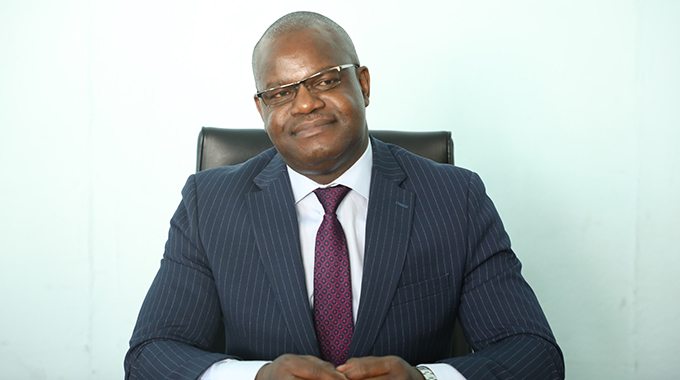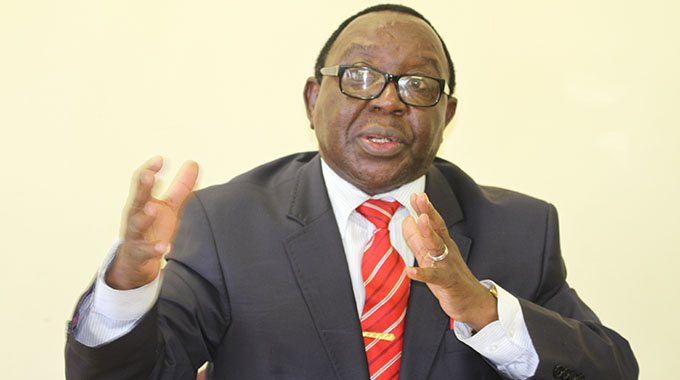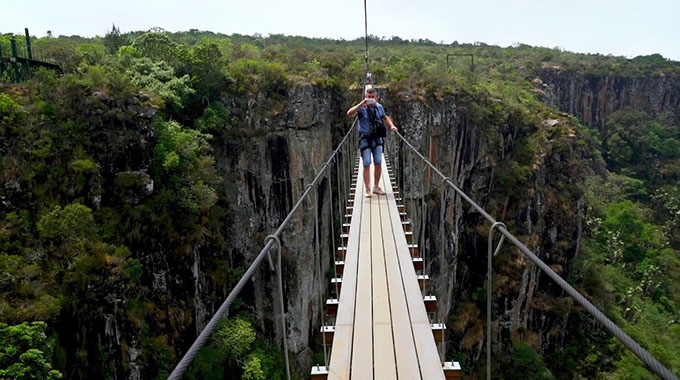Re-imagining education in the Second Republic

Nick Mangwana Pulse
Our education should produce goods and services and it’s not doing so. It should produce solutions to our challenges, but its not. It should produce job creators, but its producing job seekers. So there is something wrong with this education system that produces a graduate that makes political statements through playing football on the street whilst wearing the ceremonial graduation regalia.
This grandstanding political statement was meant push the governing authorities to give the young person a job. However, this cry for a job could easily be seen as a cry for help to go back to school. This is because, the State and parents had already done their part through providing the young person with the education he was now prancing on the street.
But instead of paying them back by creating goods and services the young person was screaming that they were not done yet. He was now demanding for a job. The gift that gave was supposed to keep giving. This is not to blame the literate young person for this is all he knows. Information is liberating and any deprivation leads to one being a prisoner to ignorance This “give me school fees, give me pocket money, give me books, give me time to study” with all this tragically culminating into a “give me a job” testifies to a calamitous spirit of entitlement bedevilling the nation. A big of this is founded in our educational system.
Let us talk a bit more on that. For a long time, this country was under the leadership of the founder of the First Republic, who was a teacher. The good teacher made the whole nation literate and numerate. This was by no means a mean achievement, but so we became a nation with innovative talent because nothing but a proverb, a nation full of very dedicated derelicts, angry at the system which is not providing them with solutions to today’s problems which ironically we would have expected its educated class to provide. Our education dismally failed to produce national possibilities but some personal ones here and there.
Clearly, it was not working. This is where a new philosophy that the Minister of Higher and Tertiary Education, Prof Amon Murwira, is almost obsessing over comes in.
This approach called in Higher and Tertiary Education Heritage Learning came with the Second Republic. Our education system in the old dispensation was focused on three missions, namely, teaching, research and community service. Two more missions had to be added to make it fit for purpose. These are innovation and industrialisation. Where education was a ticket to expressing what had been written and discovered by others, it is becoming a means to think solutions, a ticket to innovations. It may help here to illustrate this part by giving examples.
In January 2019 the Government of Zimbabwe rolled out an urban mass transportation system under ZUPCO. This was a well thought through programme put together in three days and one of the key issues was the recruitment of conductors for the buses. As it turned out, thousands of young people wished to apply for the jobs on offer. This phase saw the employment of 61 young people, the majority of whom were university students. In less than three weeks, 45 of the 61 had been arrested and most convicted for theft of cash and other fraudulent activities.
Here was a problem, so what was the solution besides locking up those who are dishonest?
Looking for solutions
Nations look up to their institutions of higher learning for solutions. In Zimbabwe at the moment the solutions appear to be easy, from grossly underrated but practical. For example, Harare Institute of Technology (HIT) came up with the “touch and go” fare system.
This is a cashless way of transacting on the Zupco buses which is like London’s Oyster Card System. The commuter is issued with a smart card and money is loaded onto it. Passengers tap the card on an electronic reader as they enter the bus and the due fare is deducted.
There is no role for the conductor inasfar as handling cash is concerned. This is a great example of our educational system providing solutions to our problems and a service to our needs. This is what the Second Republic is all about; ensuring that education leads to industrialisation and context-related solutions.
These inventions are not a result of a fluke or some miracle from somewhere. They are a result of a meticulous well thought through deliberate policy. Incidentally, the second example again involves the underrated HIT.
As most are aware, questions have been asked about whether all the fuel boughtwith taxpayers’ money is ending up driving our agriculture, our mines, industry or our vehicles or elsewhere. Nobody doubted that we needed a system either to mark our fuel or at least find a way of tracking it. HIT came up with the National Fuel Monitoring and Management System (Matsimba). This system is currently beeing piloted by the Central Mechanical and Equipment Department(CMED). This system, “monitors fuel volumes at fuel depots and at service stations as well as the tankers that are distributing the product countrywide”.
This exemplifies how the Government has established a link between our national needs and our institutions of higher learning. So this vision by President Mnangagwa is not a myth but it is already providing solutions. It’s already producing goods and services. Those who may not appreciate the vision of our President now will leave the burden of gratitude on the next generation.
This is the essence of Government reconfiguring our tertiary education from 3.0 to Higher and Tertiary Education 5.0 where innovation and industrialisation are added to the other three key pillars of education. The expectation now is not for graduates to play street football adorned in ceremonial graduation regalia. But it is for them now to leave institutions of higher learning as inventors, creators and innovators. They should not just be assemblers, repairers or installers. Israel is where it is today in technological terms being driven by start-ups. Zimbabwe through this vision is on its way there.
To achieve all this, Zimbabwe needs strong educational programmes, with competent educators, the proper physical and financial infrastructures.
Government has already begun working on this through the harmonisation and standardisation of the National Qualifications Framework Programme. This will integrate education into a unified structure.
Furthermore by standardising promotions and elevations to position grades Government is now removing disparities in the promotion criteria at higher and tertiary institutions of learning. This makes the promotions system transparent and internationally trustworthy and competitive. Instead of relying on Government to fund its infrastructure and asset projects, institutions have been directed to enter into Build, Operate and Transfer (BOT), as well as Private Public Partnerships (PPPs) in order to deliver an inspired environment for students and staff.
In order to ensure that higher and tertiary education translate knowledge into goods and services, Government is establishing science parks/innovation hubs at all State universities, as well as industrial parks in the country’s 10 provinces. Students will now have the necessary infrastructure to nurture the translation of what they have been taught through research and development into goods and services. This model has worked in rapidly industrialising countries such as South Korea, China, Malaysia, Brazil and many others.
The way forward
Industrialisation and modernisation do not just happen, they are a consequence of a systematic implementation of scientific and technological heritage- based innovations.
Government is reconfiguring higher and tertiary education from Education 3.0 to Education 5.0, whereby innovation and industrialisation are added to the key pillars of education. What this means is that graduates are now expected to leave higher learning institutions as innovators, creators, and not just persons who can repair, assembly, or install what others have created.
So far, six science parks/innovation hubs have been established at State universities including the University of Zimbabwe (UZ), Chinhoyi University of Technology (CUT), HIT, Midlands State University (MSU), Zimbabwe National Defence University (ZNDU) and the National University of Science and Technology (NUST).
These innovation hubs provide the necessary equipment and environment for our students to create high-tech business enterprises. If students at HIT with the few resources they had could come up with the e-ticketing system and Matsimba, just imagine how much more they can come up with when given the proper tools and resources. These young people with brilliant ideas now have an avenue where their potential can be harnessed to bring about industrial development and modernisation in the country.
We are a country with talent, a country with natural resources, but a country that had not managed to harness its big ideas upstream to make them a reality. This country is now crossing the Rubicon from being a perennial potential into a country that will be living its reality by the year 2030.
Nick Mangwana is the Secretary for Information, Publicity an Broadcasting Services







Comments